Abandoned Stadiums of the United States
Thursday, 1st December 2011 by Kyle Kusch
Today, it’s the second part of Google Sightseeing’s tour of abandoned stadiums and arenas around the world. No country on Earth has more large arenas and stadiums than the United States, so it's no surprise that no country has more abandoned venues. There are so many abandoned stadiums in the US that they could fill countless pages; here are just a few of the many.
Unlike the rest of the world, most auto racing in the United States takes place not on road circuits, but on oval speedways contained inside a seated stadium. Almost everyone has heard of legendary oval circuits such as Indianapolis and Daytona, but across the country literally thousands of local speedways dot the landscape.
Take Longhorn Speedway on the outskirts of Austin, Texas. Opened in 1960 as Austin Speed-O-Rama, the quarter-mile track has been dilapidating for over a decade; though not quite long enough to obscure the Budweiser advert on the start-finish line. A few years ago rumours suggested the overgrown facility was purchased by Sandra Bullock and her motorhead ex-husband, but if true, nothing ever came of it.
Lakeside Speedway in Denver, Colorado hosted hundreds of thousands of race fans from 1938 until 1988 - when economic factors and an unfortunate spectator death combined to cause the facility to be shut down. Today, the cracked pavement and ruined grandstands remain, along with a number of cars left on the track.
Middle Georgia Raceway was open for just five years (1966-1971) before it met its demise. Not only was the track home to four top-level NASCAR races during its short life, but it also played host to the 1970 Atlanta International Pop Festival where legends such as Jimi Hendrix, B.B. King, and Jethro Tull played to an estimated 500,000 people, which to this day ranks as one of the largest concerts in rock history.
While stock car racing has long been popular in the south, the ‘national pastime’ of the United States is usually considered to be baseball1. One of the most difficult ballparks to play in was Pittsburgh’s Forbes Field, home to the Pirates from 1909 to 1970. In the old confines, hitting a home run was a very hard thing to accomplish. Today it’d be pretty easy, as only the outside wall (including the distance markers) remains; most of the structure having been damaged in a 1971 fire. The ball diamond that exists today actually lies beyond the old Forbes outfield, which was on the other side of the wall.
Tiger Stadium was the legendary home of the Detroit Tigers from 1912 to 1999. Despite public outcry and nearly a decade of petition from the general public to preserve the old ballpark, the stadium was finally demolished in 2009, leaving just the field of play and the iconic flagpole behind centre field. Street View shows the pile of rubble left behind by the wrecking crews.
In St. Louis, there have been three separate venues named Busch Stadium. The second Busch closed in 2005, with the third Busch built next door in the old car park. The superstructure of Busch II was removed, and the field was redeveloped as a softball field as in Forbes Field; the rest serves as – you guessed it – the new Busch car park.
Not to be confused with St. Louis’ Busch Stadium is Indianapolis’ Bush Stadium. Built in 1931 for baseball, Bush was converted into a dirt track speedway in 1997 before being abandoned completely in 1999. Like the other Busch, we see that Bush is now also apparently a parking lot, though in a much more depressing sense. Bing Maps’ bird’s-eye view has an even less-flattering view of the derelict structure.
We end our abandoned stadium tour with a stadium that never even made it to completion. In 1986, the city of Sacramento wanted a baseball stadium to complement the ARCO Arena (now Power Balance Pavilion), the home of the NBA’s Kings. While the playing field was dug out, only the foundation of the stadium was ever built.
Today, the unfinished ballpark, rimmed by trees, forms an oasis in the middle of the Pavilion car park. Literally – when it rains, it fills with water!
Read part one of our abandoned stadium tour: Abandoned Stadiums of Europe, South America, and Africa.
-
This summer, we looked at the current stadiums of Major League Baseball. Read our American League and National League articles for tours of far less depressing stadiums! ↩︎
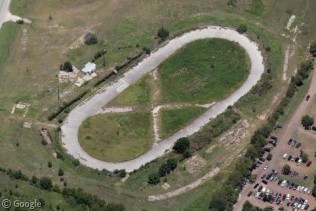
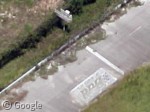
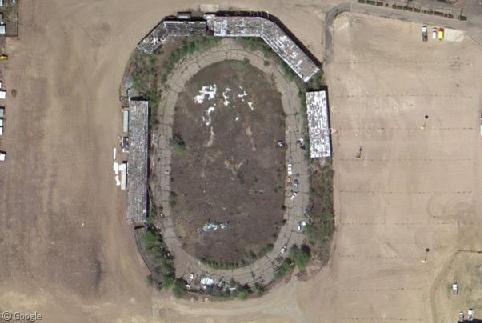
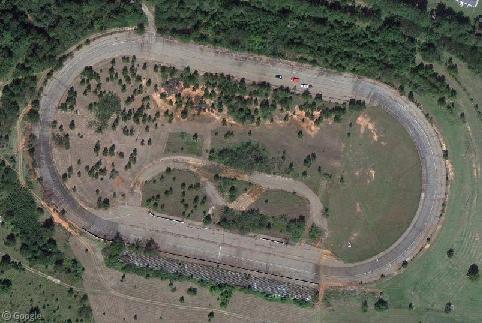
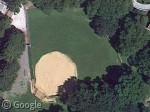
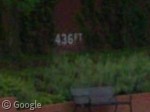
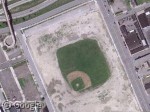
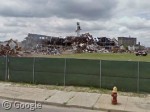
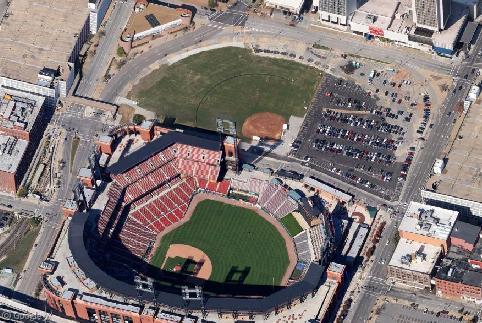
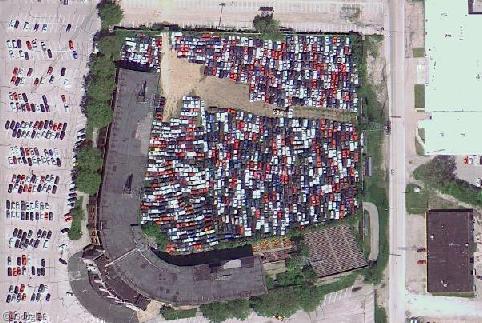
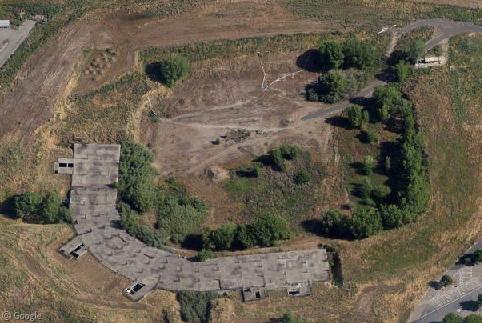
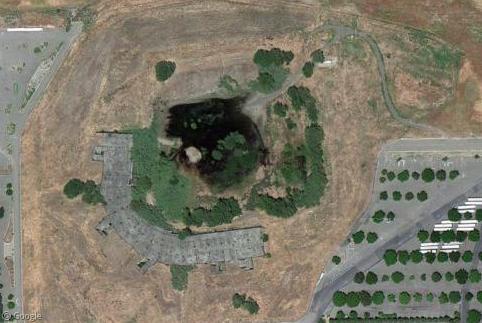
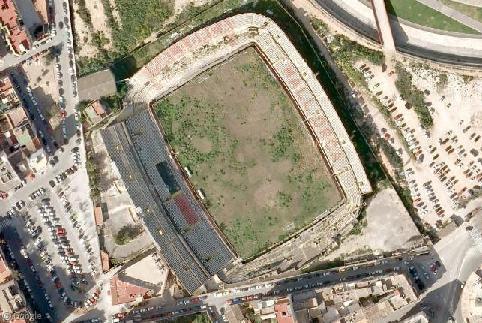
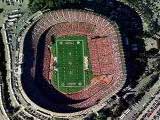
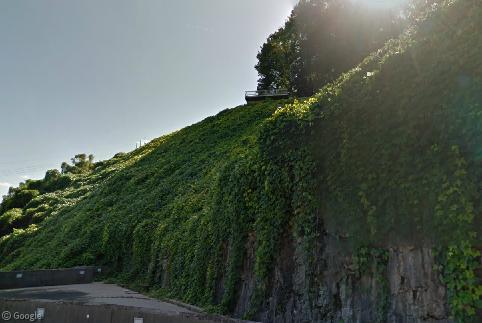
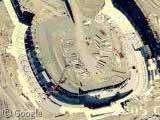
View Placemark
Hinchliffe Stadium in New Jersey http://en.wikipedia.org/wiki/Hinchliffe_Stadium
While not on the same scale as these, I couldn’t help but think of the Phoenix Trotting Park in Goodyear, AZ, which has been abandoned since the late 60s, aside from a brief refurbishment for the Charlie Sheen film No Code of Conduct.
View Placemark (33.457403,-112.436485)
The old Busch II field wasn’t preserved. That area was a pit for a couple of years waiting for a proposed “Ballpark Village” that has yet to materialize. To make the area look nicer than a partially water-filled hole in the dirt, earth was moved and grass was planted to make a small field where a few games are held each year for little league / softball league teams.
The note on Forbes Field includes a few inaccuracies. The section of outfield wall is still there, in its original location. The field that remains was built later and is not the original location of the infield. It actually lies what would be outside of the outfield wall, in home run territory. The original home plate still exists, in a nearly accurate location (supposedly the actual location is now a restroom or classroom), mounted in the floor of Wesley Posvar Hall on the adjacent Pitt campus.
If you look at the overhead photo, the wall is located in the stand of trees next to the 3rd base line of the newer baseball field. Posvar Hall, home plate’s location, is the L-shaped building across the street.
More info here: http://en.wikipedia.org/wiki/Forbes_Field#Memorials
Yeah, here’s a 2007 picture I took of Busch stadium where you can see that the old stadium site was basically muddy patch of grass that they eventually turfed over.
Sorry: here’s the link: http://www.flickr.com/photos/kaszeta/651568431/
Thanks, guys; that’s good to know! I’ll amend the article accordingly. And thanks as well for the links!
Here’s a defunct sports arena that was supposed to be home of Minor hockey team.
View Placemark
historical history.. gr8
Middle Georgia Speedway in Byron, Georgia has a moonshine still built under the banked 3rd and 4th corners and the ticket boot was the underground access to the Moonshine Room.